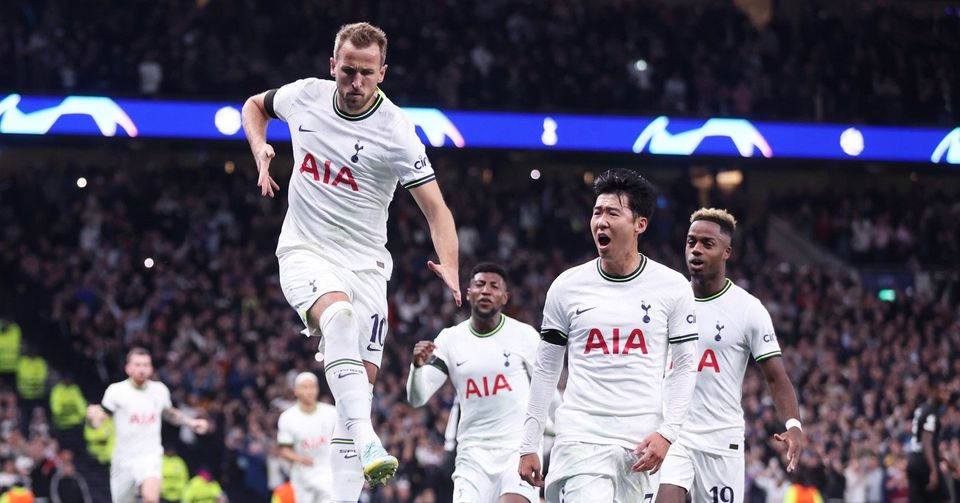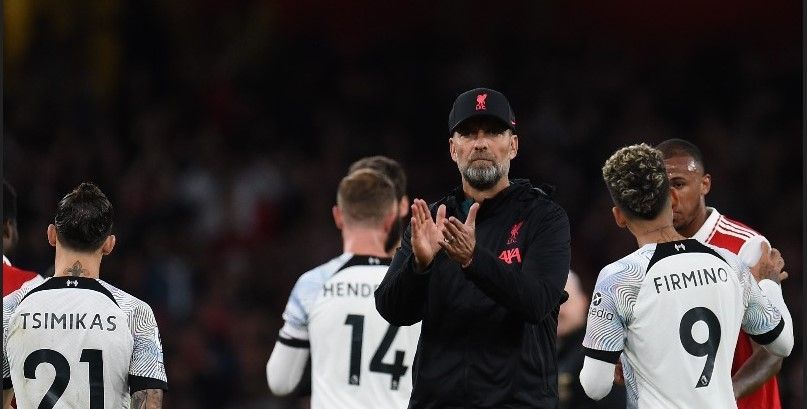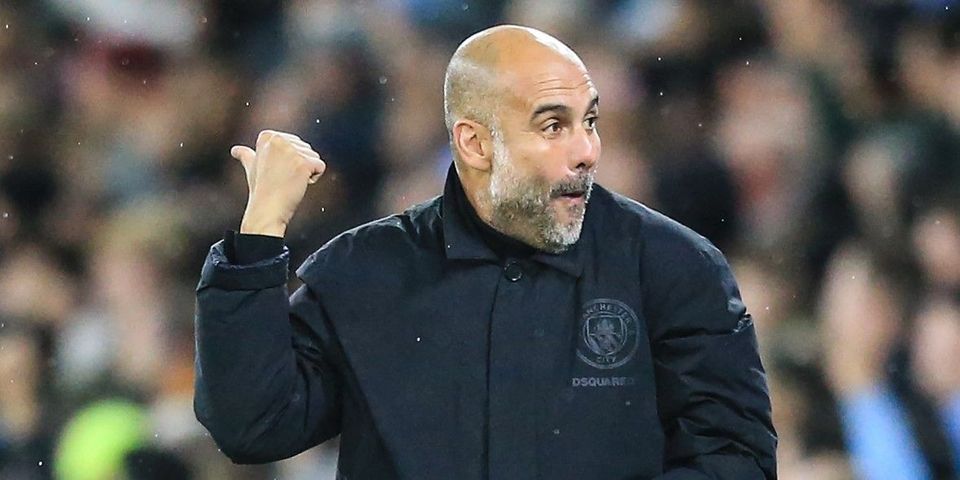The German's are coming! A tactical breakdown of Die Mannschaft
Three critical parts of the German system, areas of strength that could hurt England and some weaknesses, which could be exploited to devastating effect.
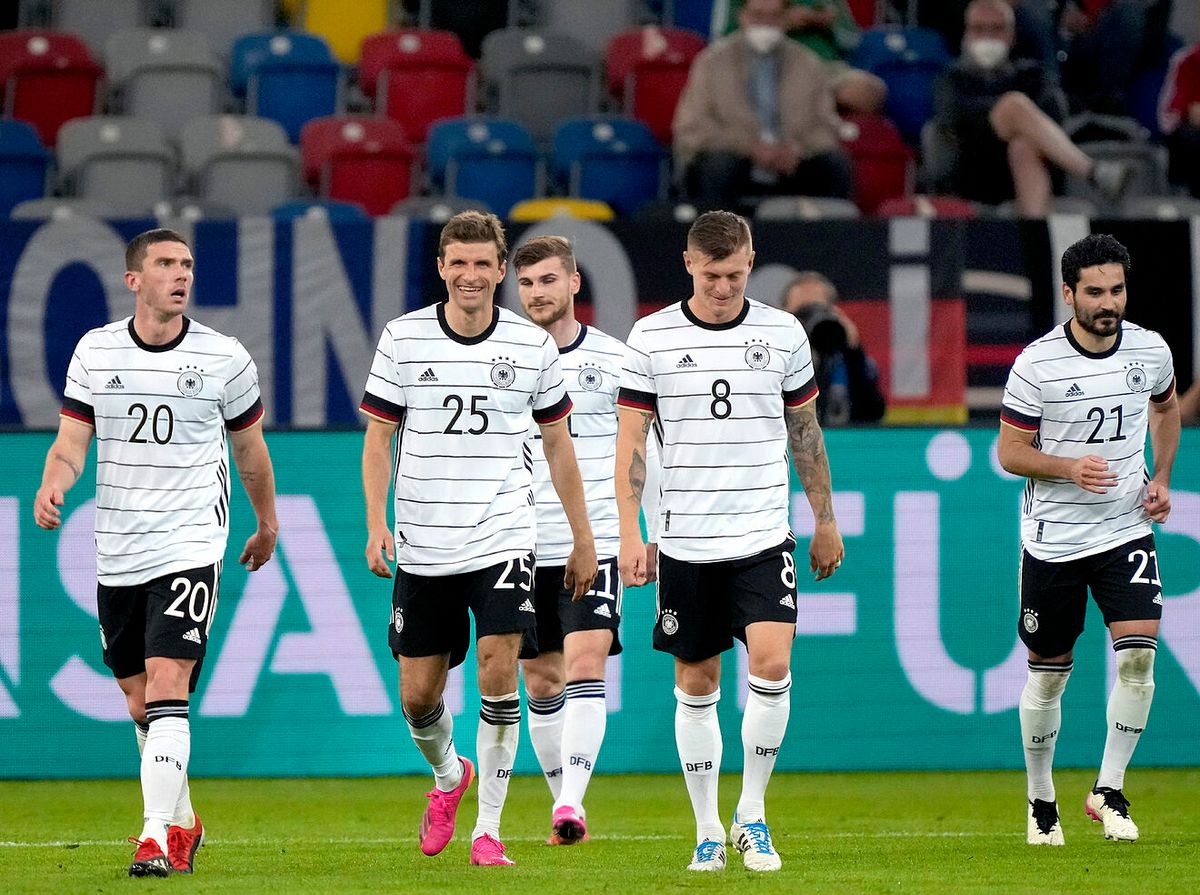
The penultimate tie in the round of 16 sees England face Germany at Wembley on Tuesday evening.
It provides an opportunity for both teams to supercharge their campaign with a marquee victory in a game they would both back themselves to win.
For Germany, there was pessimism from nearly every corner before the tournament, but they've been impressive against the best opposition, a narrow defeat to France was followed by a magnificent 4-2 win against the defending champions Portugal.
But despite those bright displays, they have shown some frailties, highlighted, of course, in their game against Hungary, where a late equaliser kept their EURO 2020 hopes alive.
Let's look at three critical parts of the German system, areas of strength that could hurt England and some weaknesses, which could be exploited to devastating effect.
Three at the back
Germany's form coming into the EUROs was patchy at best. They were humiliated by Spain in November and suffered further ignominy at home at the hands of North Macedonia in March.
The latter result led Low to recall Muller and Hummels, who had been discarded after Germany's group-stage exit at World Cup 2018. As Jurgen Klinsmann said in his recent column on BBC, their inclusion necessitated a change in shape.
"Joachim made the decision to bring the experience of Muller and Hummels back for this European Championship. Muller is a little like a connector to everyone, while Hummels is technically gifted and has such great vision.
"Joachim knows that Mats' strength is not speed - we saw that against France, and that run by Kylian Mbappe when I felt sorry for him! - but the others can cover his lack of pace.
"This is how we ended up in the 3-4-3 formation we play right now, and it looks as if the players are enjoying it. I just hope that continues against Hungary, and takes us into the last 16."
Germany's victory over Portugal best displays the advantages of their shape. Joachim Low completely outfoxed Fernando Santos, deploying his wing-backs high and wide to create overloads as the centre-backs pushed up and split, fashioning attacks from crosses out wide.
Every German goal came in near-identical fashion.
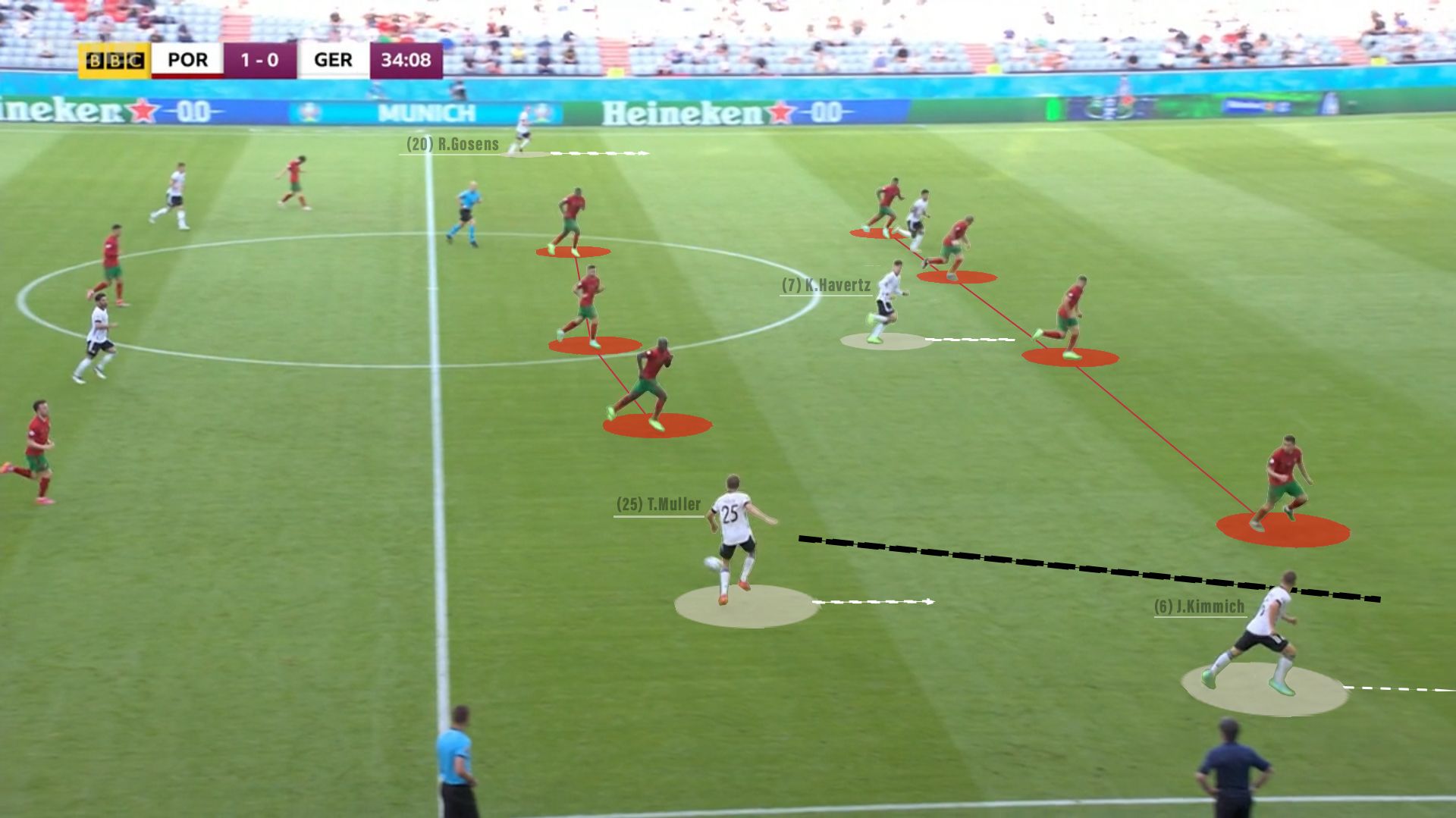
The first image shows the play leading to Germany's first goal. Portugal are set up very well with their defensive and midfield lines, compact and in tandem, but even from this position, it's clear how ill-equipped they were to handle Germany's shape.
Portugal move as a unit toward their left side to cover Kimmich and Muller, but as we'll see, it leaves Gosens in acres of space on the far side.
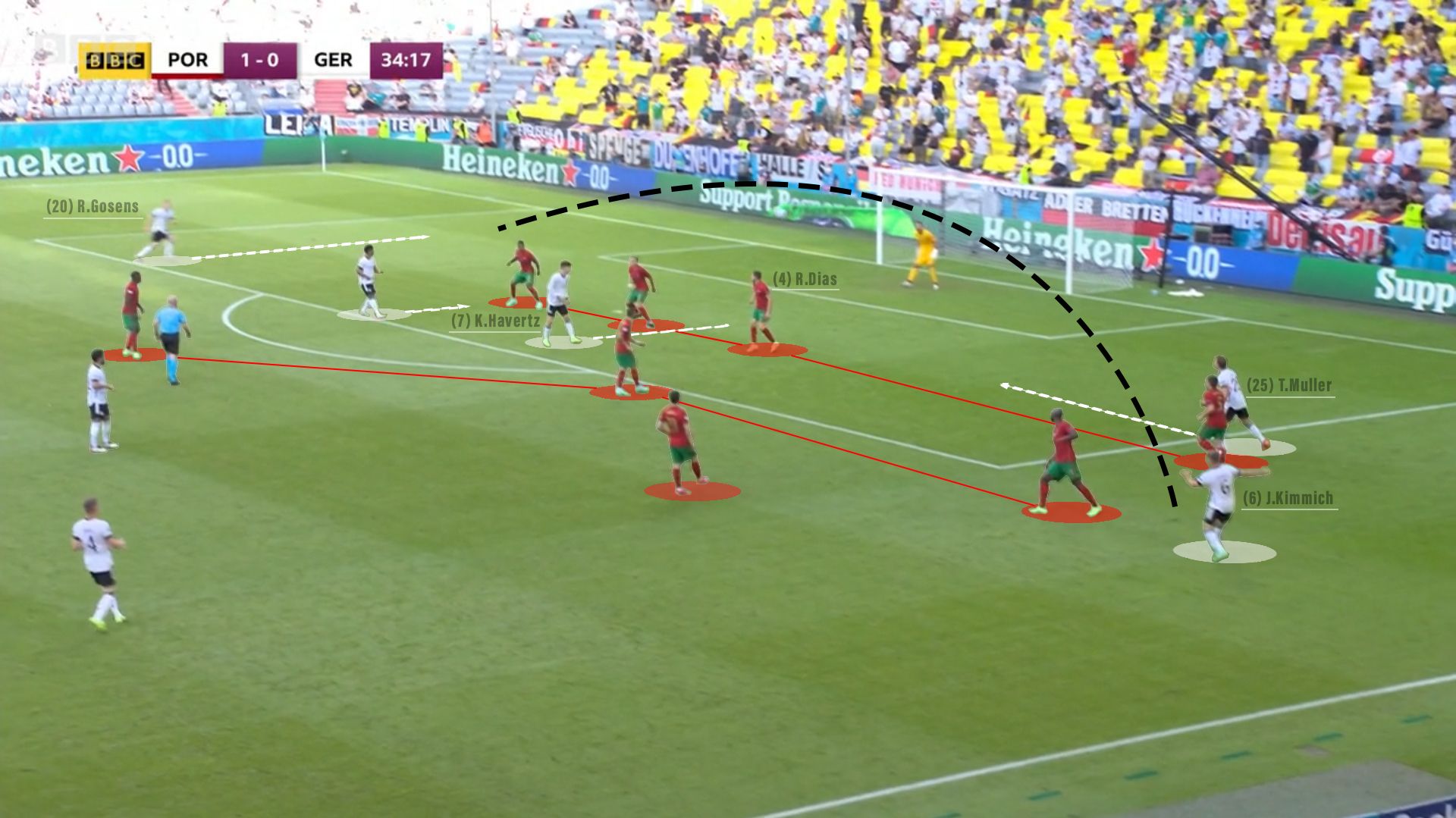
Only a few seconds later and after the Portuguese unit has shifted, Kimmich can pick out Gosens coming in on the left.
By this point in the game, Germany had already had a similar goal disallowed; Portugal were helpless to defend against the wing-backs with Gnabry and Havertz occupying Dias, Pepe and Semedo in the middle.
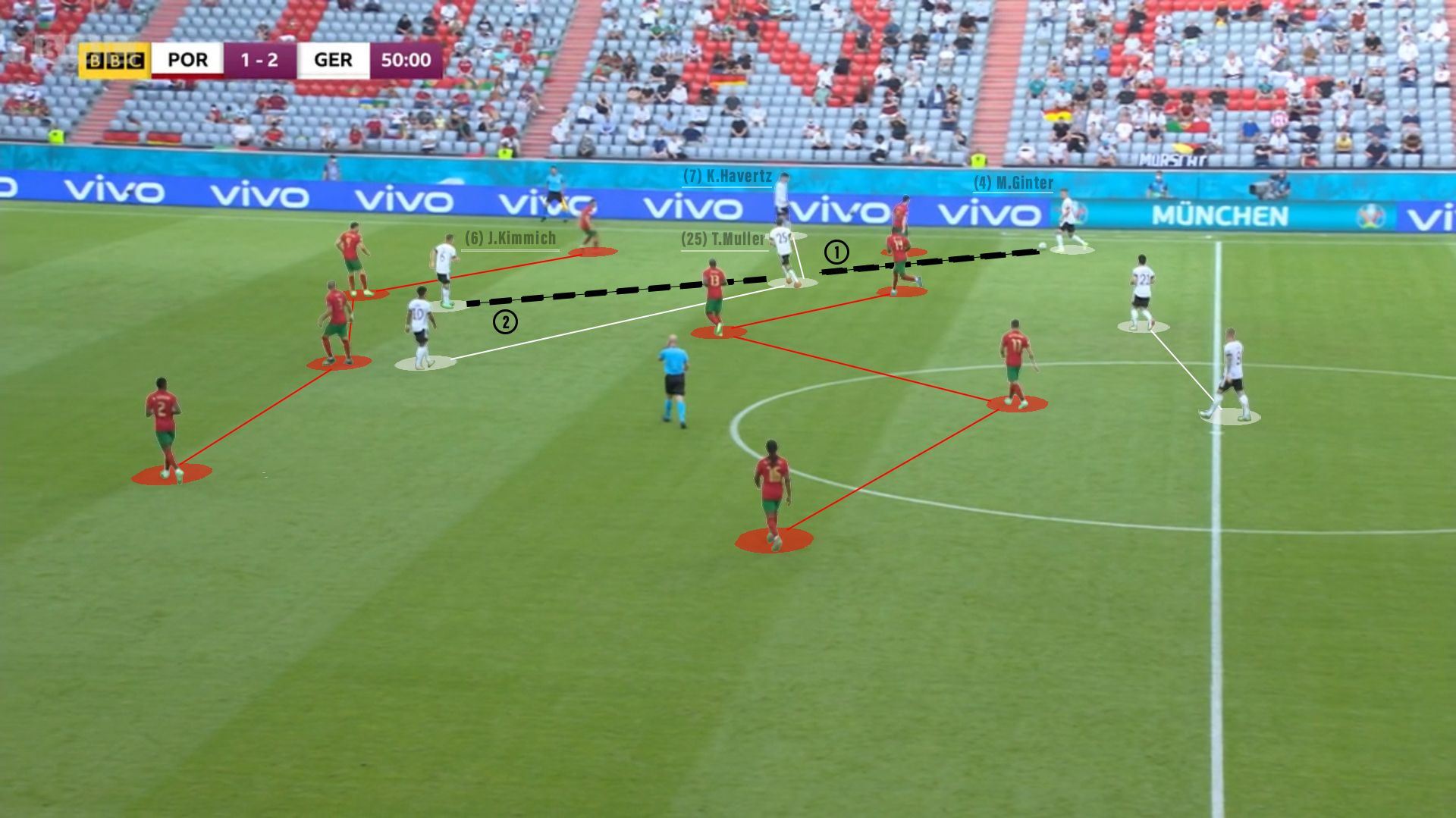
The construction of the 3rd goal was a little more intricate but exploited the same deficiencies in the Portuguese defence.
Interesting to note Kimmich's advanced position in the build-up to this goal. Germany's front three joined him in occupying 6 Portuguese players, weary of an overload on the right side as Ginter had pushed right up into a right midfield position.
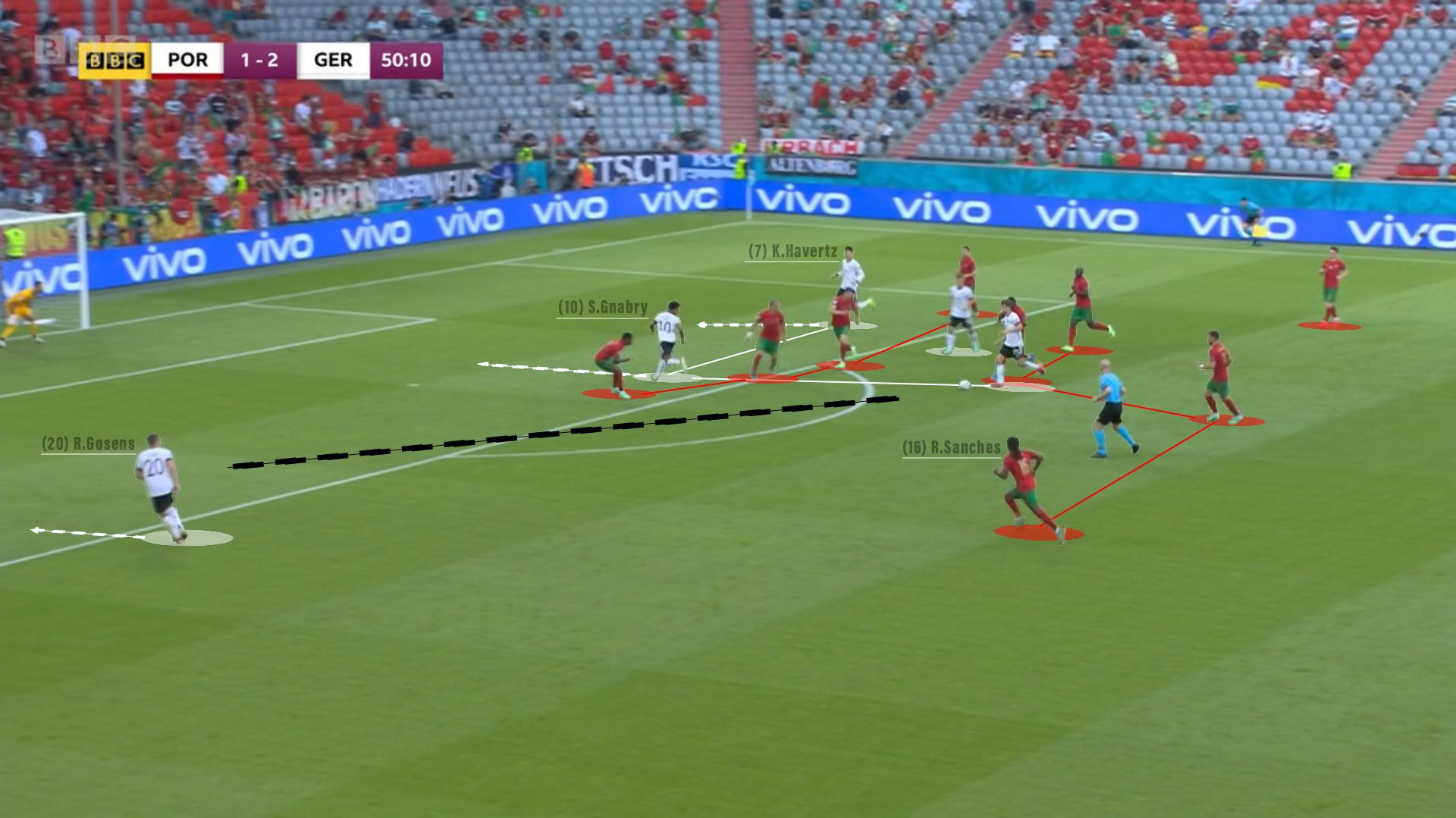
After some interplay between Muller and Kimmich, the same space on the left was vacant for Gosens to attack.
The point of note in these examples and others below is the formation faced.
In each of their first two matches, notably against two of the strongest sides in world football, Germany faced a variation of a 4-3-3.
Although outnumbered in the centre, they found joy on the flanks.
Against France, a game they lost, Germany had more possession, more shots, more clear opportunities, and you could even argue, were the better team.
With the ball, they push high, split their centre backs and had at least 3, often 4, players in the box ready for deliveries.
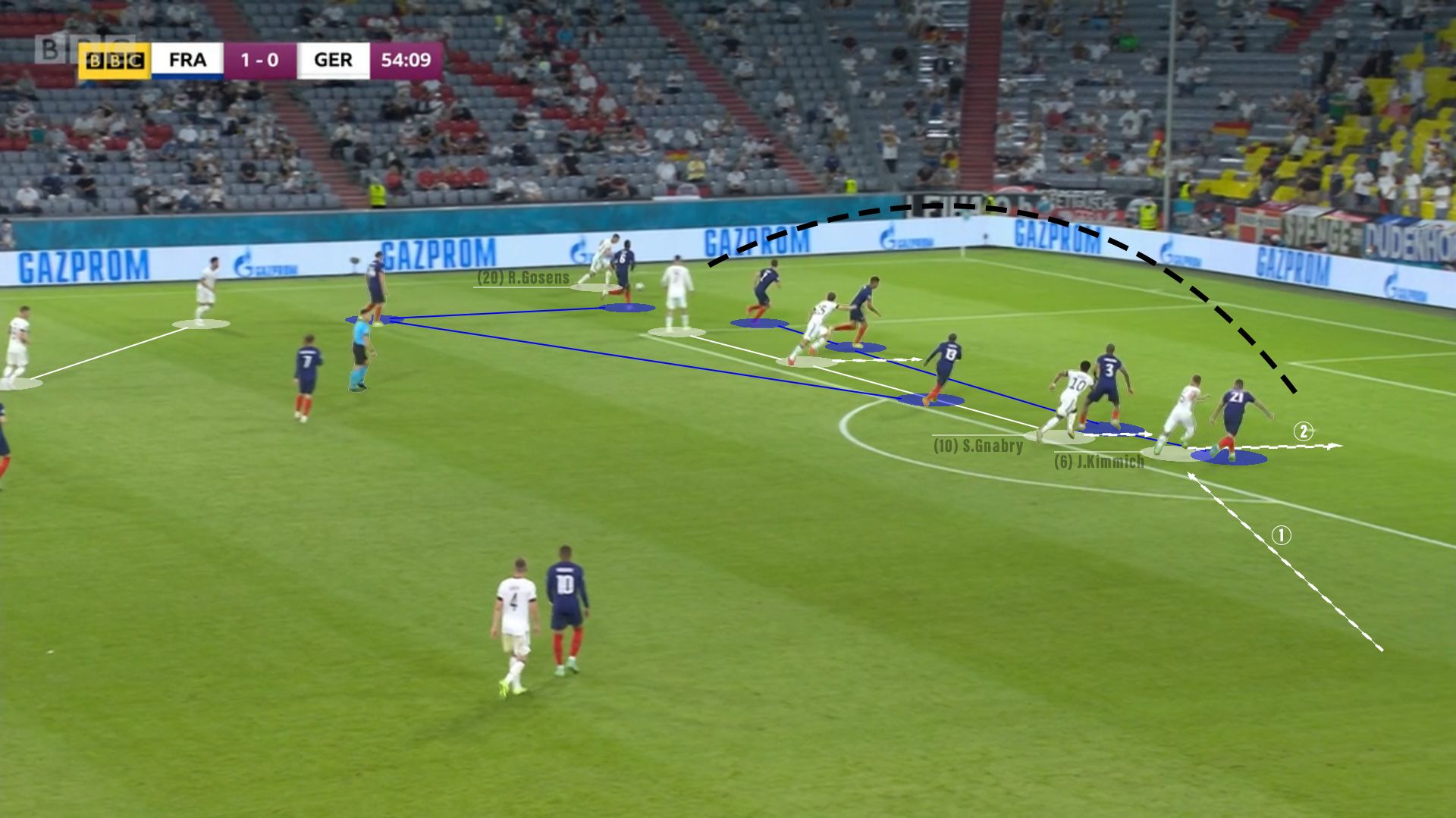
Here, the French covered well, with Pogba getting wide to deny Gosens space out wide.
Yet, what's telling are the numbers Germany have attacking the penalty area.
Their formation allows for all three of their forwards and Kimmich to attack the box when crosses come in.
If Goretzka starts on Tuesday, England may also have to deal with his considerable aerial threat. This opportunity yielded a difficult but decent chance for an equaliser as the cross fell to Gnabry running in.
Counter attacks, counter attacks, counter attacks
If there is only one message Gareth Southgate can deliver to his team before Tuesday, it will be this one.
Of the five goals Germany conceded in the group stage, three were from fast breaks or counters.
They could very easily have conceded a further two; those marginal offside disallowed goals were from, you guessed it, counter attacks. Low's men appear to be having difficulty getting back into position when the ball is lost almost certainly because they push extremely high and enjoy the lion's share of possession in games.
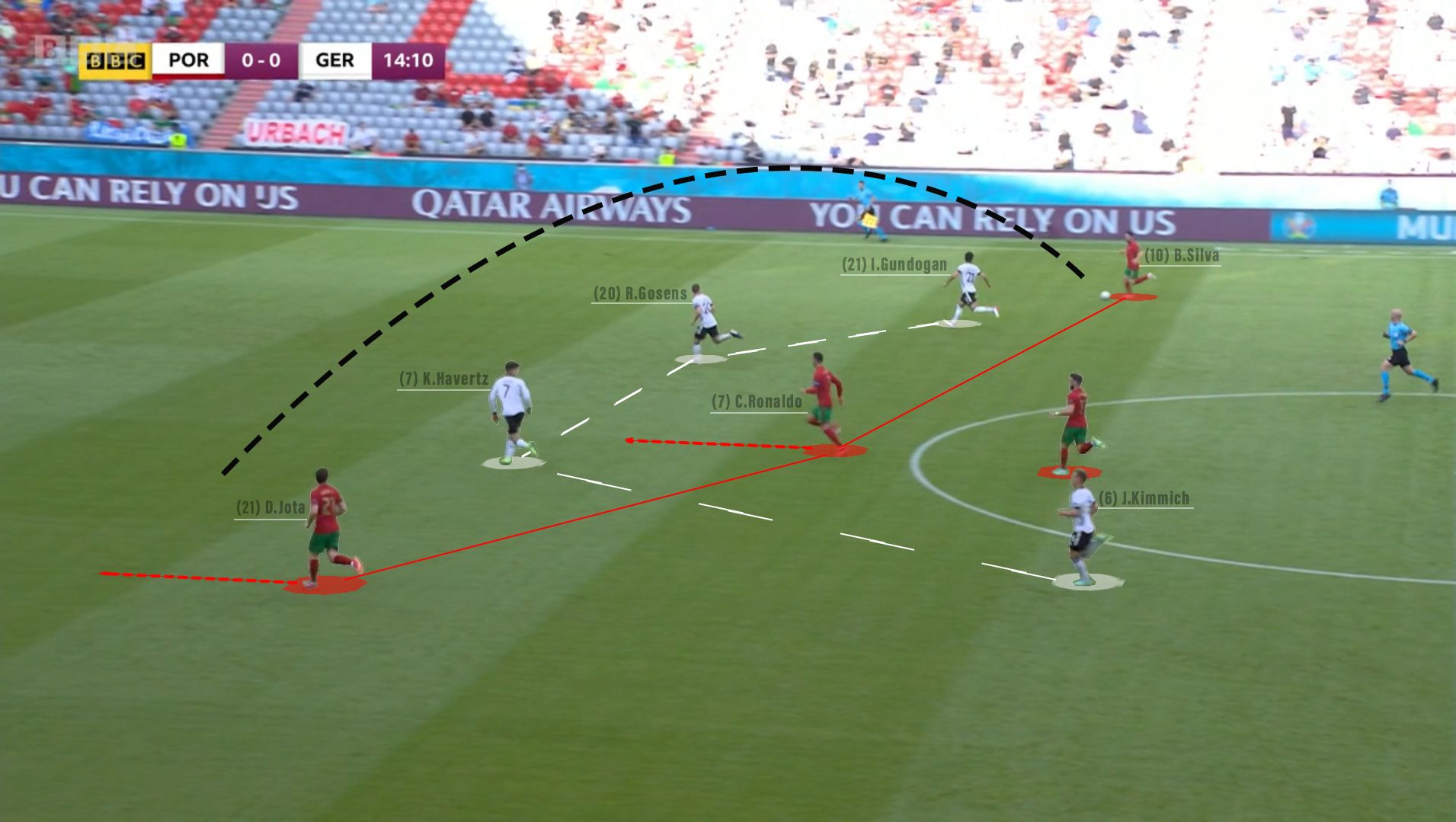
In this first example, their early concession to Portugal in game 2, it is shocking to see Havertz as the deepest defender.
This counter came from a corner which makes the absence of Hummels, Rudiger and Ginter understandable but not wholly inexcusable.
Ronaldo, striding through the centre of the pitch in the image, headed the corner away, Kimmich, on the near side, took the set-piece.
Either it was a lack of pace or a lack of desire to get back; either way, Southgate will be keen to exploit this recurring German heel.
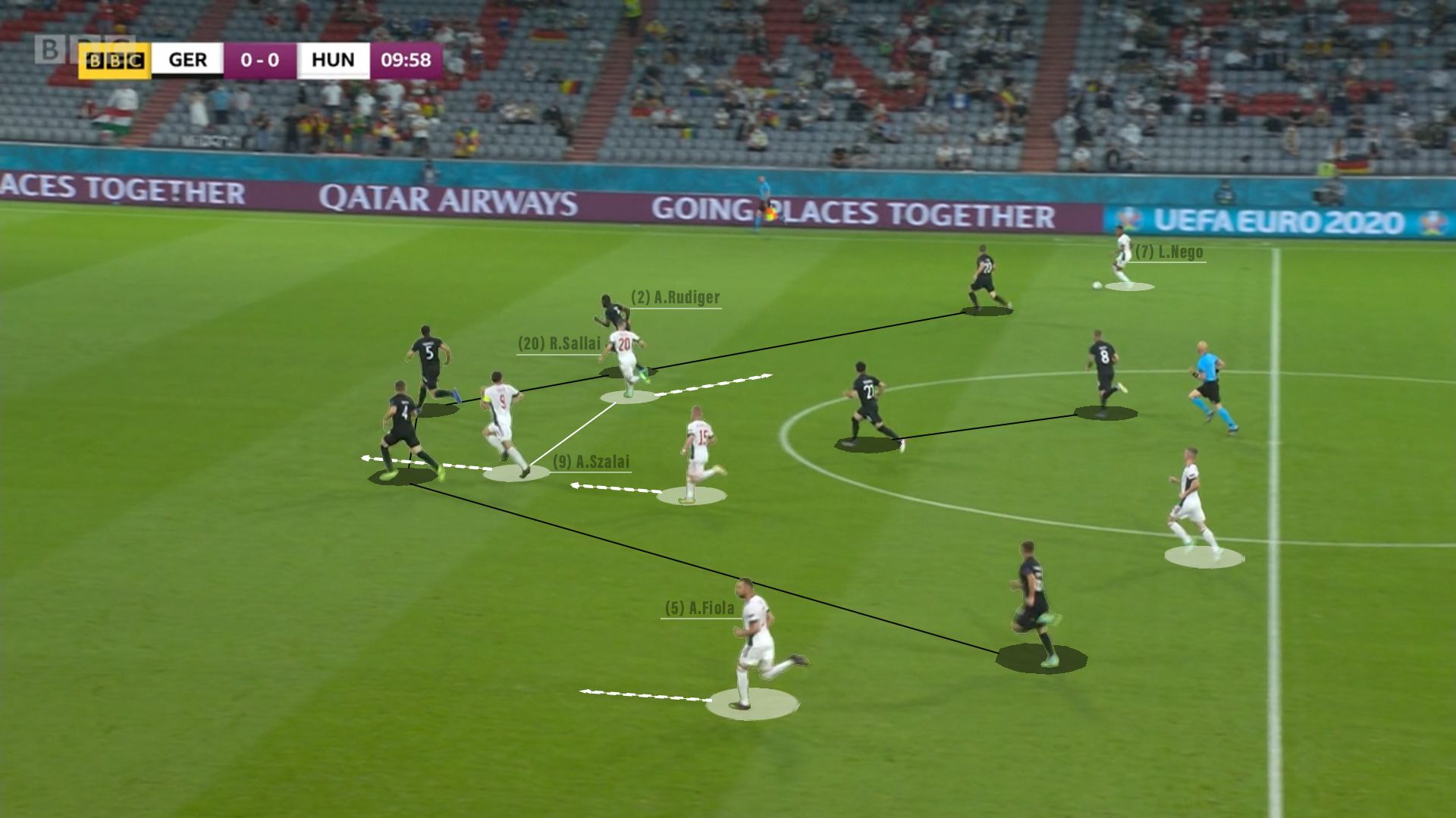
Hungary's first goal came similarly. In this image, note the improved defensive unit when retreating.
The back three were more or less in good shape, picking up the two Hungary forwards advancing.
However, it was the clever run of Sallai that bamboozled them on this occasion. He darted to his right to receive the ball from Nego; the move drew Rudiger away from his position, seen below.
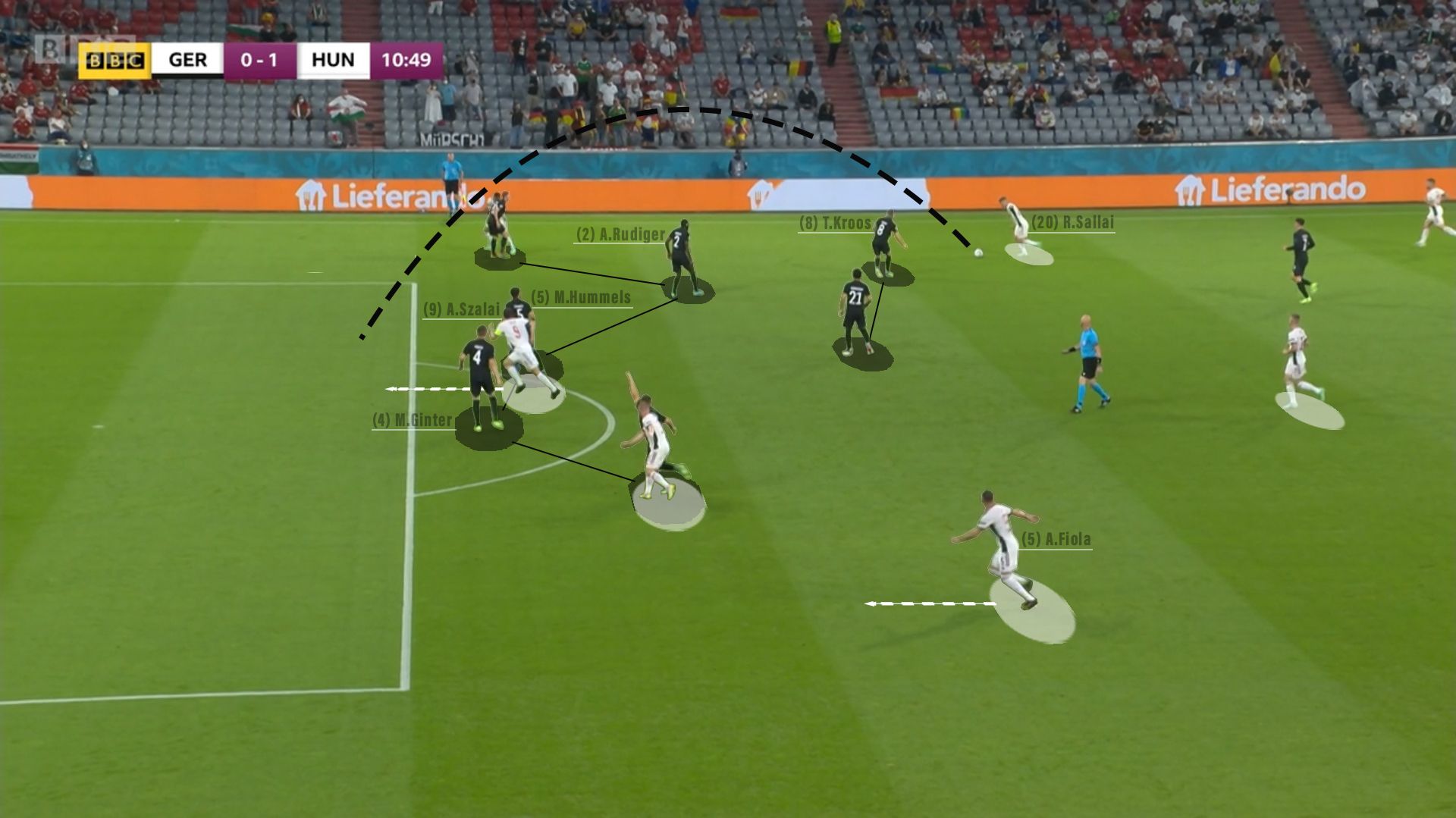
Now note Rudiger's position. He is in no man's land; his move, triggered by the run of Sallai, who plays in the cross, forced Ginter to come inside to help mark Szalai, which in turn meant Kimmich had to narrow.
If Sallai's cross had been too deep for his strike partner, it could easily have found its way to Fiola, who was completely unmarked at the far post.
High line
Germany are set up to control possession. Kroos and Gundogan stay tight and help the Germans dictate play.
As discussed, their wing-backs are advanced, their front line is in and around the box, and their back three splits and pushes up.
The resulting high line is a byproduct of how they look to start attacks, but at least 2 of the actors chosen in that German defensive role are horribly miscast.
The team benefits greatly from Mats Hummels' incredible passing accuracy and range. Still, they have played a dangerous game in pushing so far up the field with the ageing defenders' lack of pace.
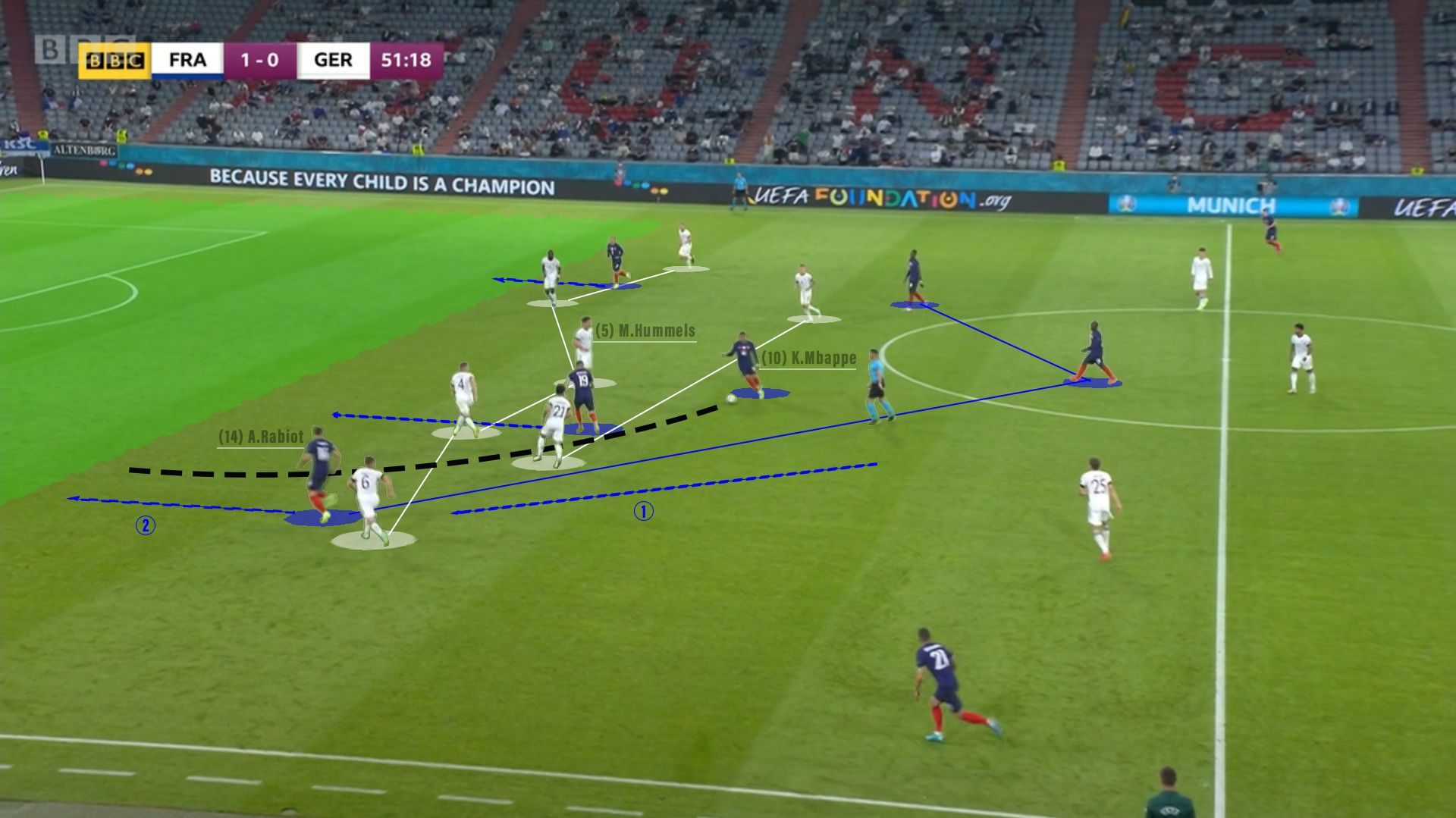
At first glance, they look fine, well spread to cover France's threat, but you quickly see the issue in this example against France.
Hummels is attracted to Mbappe, who has dropped deep, while Rudiger is cautious of Griezmann on his shoulder.
After exchanging passes with Rabiot, Mbappe plays a fairly simple ball which completely opens up the German defence. Kimmich is the only player quick enough to get back, applying enough pressure to force Rabiot to hit his shot off target.
The game in which the Germans struggled most to create opportunities was their third group game against Hungary.
It was the first match in EURO 2020 where they were matched against a back three, on that occasion a 3-5-2.
Low's team were unable to fashion chances as they had done in their first two games with Fiola and Nego tracking Kimmich and Gosens out wide. Their struggles in creation were compounded by the same defensive issues as seen below.
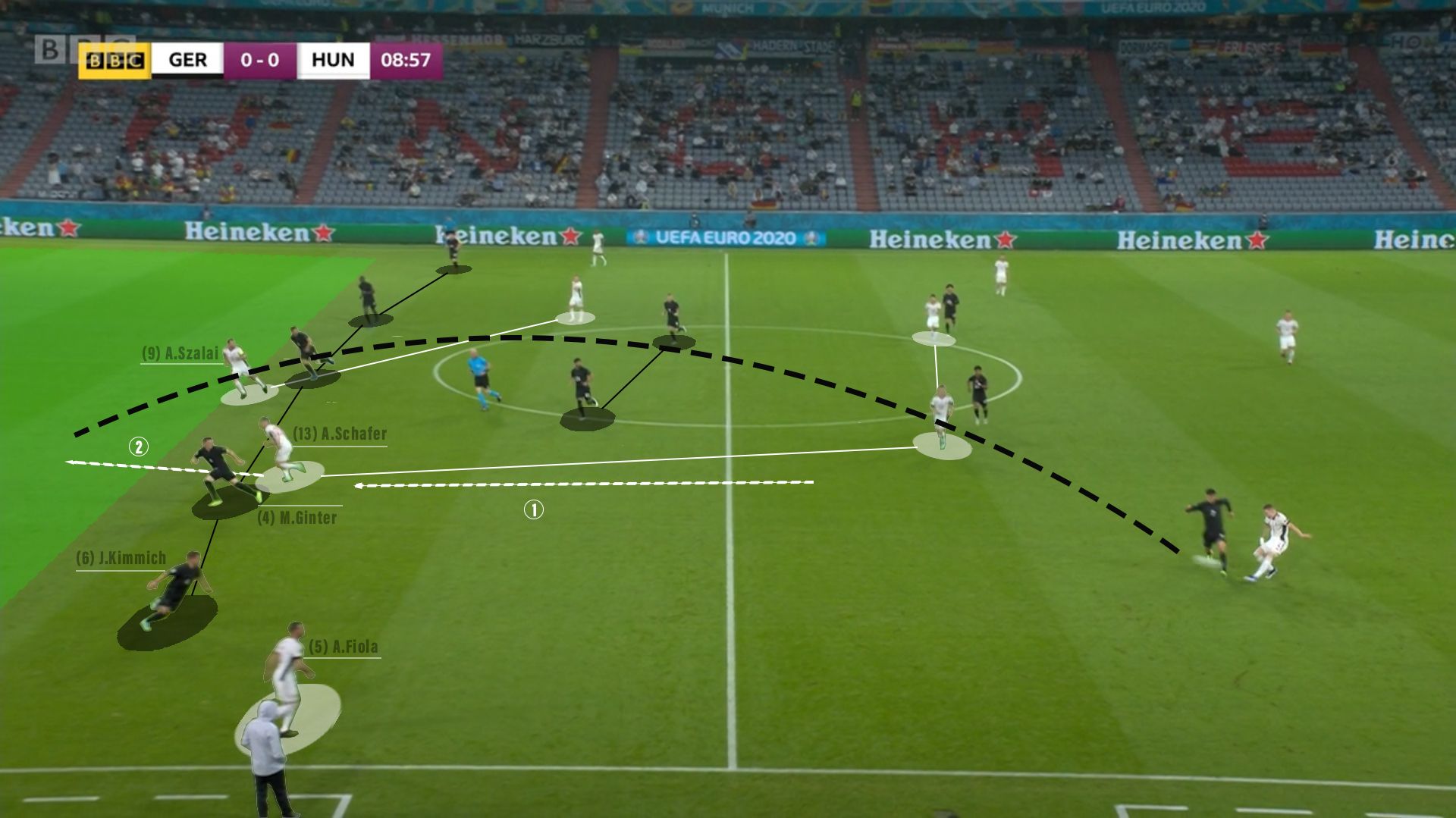
Again the Germans look in a good defensive shape, their line good enough to leave Szalai in an offside position.
However, it's the run of Schafer that causes concern. Ginter was just able to stretch enough to stop the ball from going in behind.
In both these examples, Germany were almost caught out by midfield runners from deep.
Neither Kroos nor Gundogan excels defensively, nor do they press particularly aggressively for this team.
I think this could be a key area for England, a midfield three consisting of a player who will make forward runs will cause the Germans a lot of problems.
Likely starting XIs
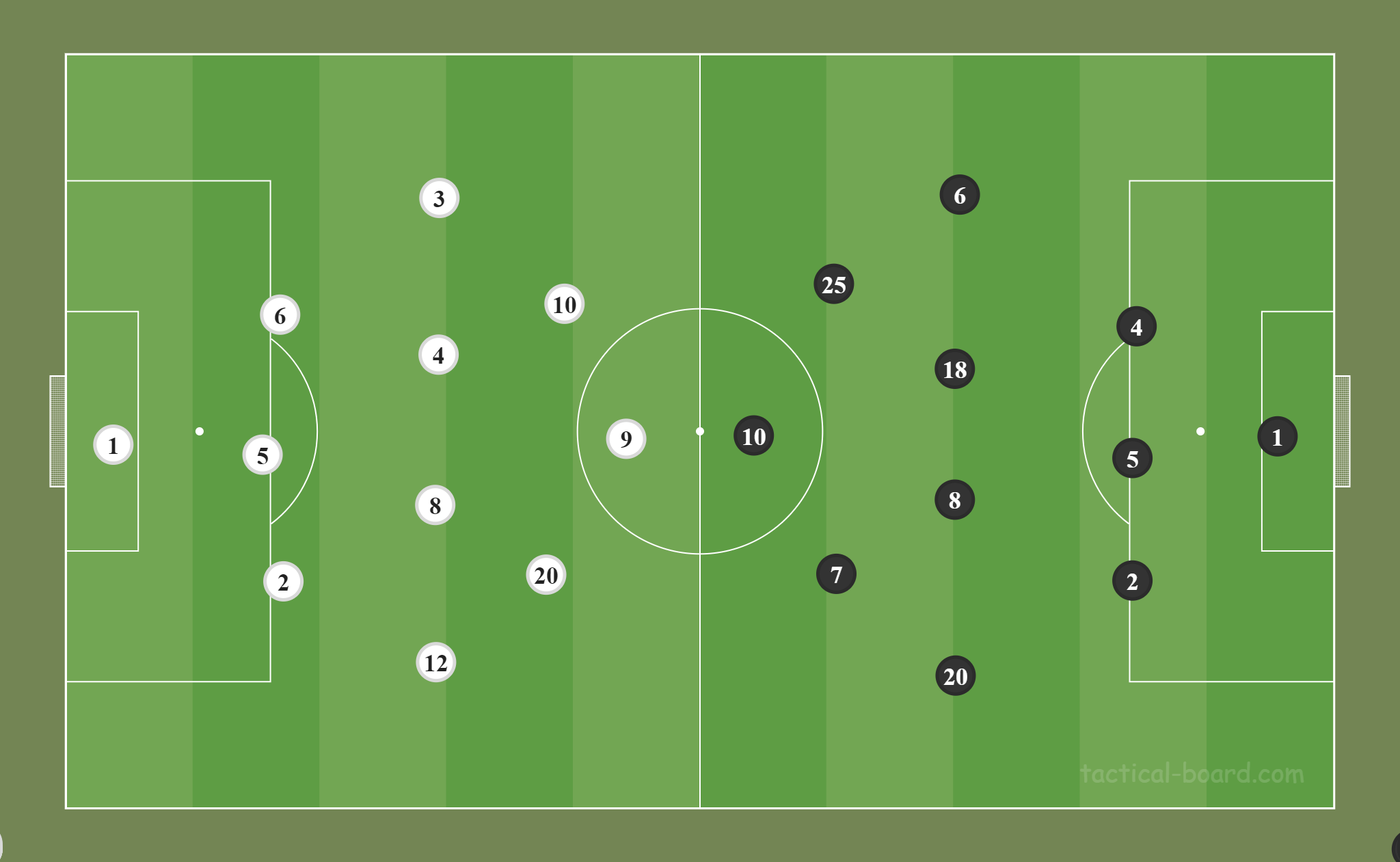
England
Pickford
Maguire, Stones, Walker
Shaw, Rice, Henderson, Trippier
Sterling, Kane, Foden
Germany
Neuer
Ginter, Hummels, Rudiger
Kimmich, Goretzka, Kroos, Gosens
Muller, Gnabry, Havertz
Won and Lost
Based on the evidence, It'll be surprising to see England start with anything other than a back three, either a 3-4-3 or a 3-5-2, though the former has been more popular with the England manager.
Germany have played their best football against stronger opposition with a four-man defence and only struggled to create clear opportunities when matched on the wings.
England's pace and trickery on the break will worry Joachim Low; it's clearly Germany's biggest deficiency and one of England's greatest strengths.
To properly exploit this, they'll have to surrender the ball, which they are yet to do in the competition.
Kyle Walker, in an underlapping centre back role, can also be extremely influential.
If Southgate is brave enough, he can create overloads on the right, giving the hosts opportunities to put balls into the box or cut back to the edge for one of the inside forwards to attack.
England will have to be wary of being outnumbered in the centre if Germany switch it up and bring Kimmich inside, as they did in the closing stages of their match against Hungary.
Playing a three man midfield with Bellingham may be an answer to this move.
I'd also expect Goretzka to start, which will give Low's men a lot more thrust from the centre and another aerial threat to go with Havertz and Muller.
It's guaranteed to be an intriguing encounter, long periods of seemingly futile possession followed by frantic fast breaks from turnovers.
Oh, and England can't sleep on Gnabry either; he's got a ridiculous scoring record in the capital.
🎙️ @SergeGnabry on #ENGGER: "Every time I've returned to London, I've had a lot of luck with scoring goals." #DieMannschaft #GER #EURO2020 pic.twitter.com/rhWvXHT0nQ
— Germany (@DFB_Team_EN) June 26, 2021
